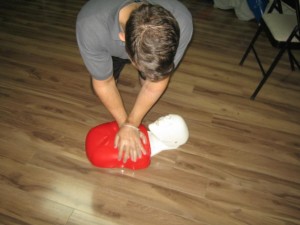The cases of heart attacks all over the world have been the leading cause of death. A heart attack occurs when one of the coronary arteries that lead to the heart muscles is blocked, usually due to the buildup of fat. As a result, the heart will stop and a part of the heart muscle that does not receive blood and oxygen end up damaged and eventually die. The symptoms of a heart attack include squeezing pain or pressure in the middle of the chest that radiates to the shoulder or arm, sweating, shortness of breath, impending sense of doom as well as nausea and vomiting. A heart attack can strike abruptly and prompt treatment is a must to avoid severe damage or even death.
When to call for help
If you suspect that an individual is having a heart attack, call for emergency assistance first without further delay. Individuals are more likely to survive if they are given emergency care in the hospital as soon as possible. Further care will be given if the appropriate tests are carried out right away.
The first task that you have to do when faced with a possible heart attack is to check for a pulse. You have to place two fingers on the side of the voice box and feel for the carotid pulse. If there is no pulse, position the palm of your hand on the chest right below the breastbone and pump it up and down. The chest compressions can help restart the heart.
CPR

Once the individual has no pulse and not breathing, you have to perform CPR (cardiopulmonary resuscitation) with artificial respiration in a simultaneous manner. This life-saving skill is easier if two people will carry it out. Take note that CPR is effective in restoring some of the blood flow and oxygen until the medical team arrives on the scene. Do not stop CPR until a healthcare professional takes over. Being prepared to perform CPR is important in emergency scenarios. All you have to do is to enroll for CPR training in Red Deer today.
What happens in the emergency room?
Once the individual is taken to the emergency room, he/she will be given oxygen therapy to ensure that the heart does not strain when delivering oxygen to the entire body. The heart rate and blood pressure are also checked and an electrocardiogram will be carried out to determine the heart rhythm.
Blood tests are performed and other advanced imaging procedures such as a CT or angiogram. Medications that deal with clots and pain will also be part of the treatment while in the emergency room.
What are the advanced treatments?
For a blocked artery, it would entail invasive treatments. The individual might have a blocked artery opened with balloon angioplasty procedure and a stent will be positioned within the artery to keep it patent. If the left main coronary artery is clogged, it would require an emergency coronary artery bypass surgery.
